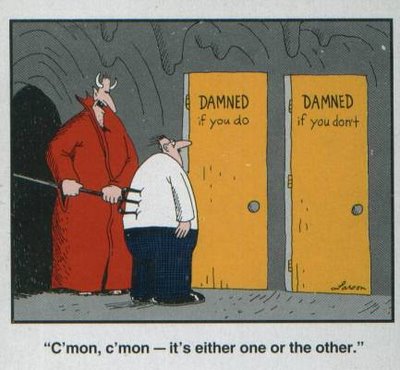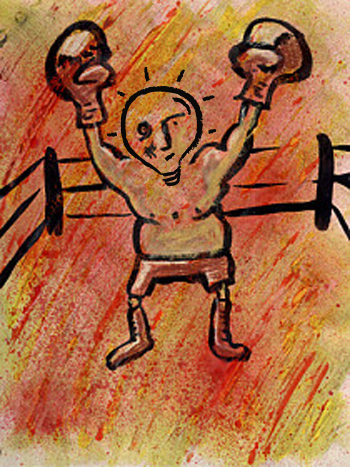It seems every so often a major debate arises because someone uses some math to redefine an accepted belief. Not a bad thing to happen as long as it is to improve mankind and not just to make a name for yourself. In fact, challenging current beliefs should be a regular occurrence.
This time it is about influence and I must say I’m concerned.
The Grudge Match
In the blue trunks we have the challenger, Duncan Watts, proclaiming the super influencer dead and raising the common man up on the pedestal as the new super being – power to the people! “Nobodies are the new somebodies” his sycophants scream from their blogs and Twitter accounts. Witness this interesting transcript where @GuyKawasaki (a super influencer under Gladwell’s model) echoes Duncan’s musings to the mesmerized crowd. (Warning! The transcript is long and chaotic, but worth the read just to see comments from everyone)
Quick question, if @GuyKawasaki was a nobody, would anyone have come to #techchat or RTed his comments? Irony? Maybe.
And in the red trunks we have the current champion, Malcom Gladwell, the godfather of the super influencer via The Tipping Point and champion to the elitist perspective of the power of the few. In his corner are the thousands upon thousands of marketers and companies who based their marketing strategies on reaching specific individuals to spread the good word.
Now the problem here is our champ is fighting with one hand behind his back because of his own views on using Social Media, opting instead for more traditional means such as speaking, his books and PR. With Malcolm’s absence from Twitter – does the champ stand a chance while every minute his idea empire is being besieged by Duncan’s minions?
If you believe, like I do, that ideas struggle for existence; rising and falling as they gain strength or weaken to competing ideas then this could be an interesting fight indeed. Natural Selection at work.
But before we get into the color commentary of our title fight, let’s first understand what the fight is about.
Somebodies, Nobodies and the Nature of Influence
 So is there room for a third idea here on influence? One that lands squarely in the great gray area in between these two polar opposites. After all, how can a complex human condition such as influence be explained in such a black and white perspective? How can math or even Chaos and Complexity Theory, for all its power, truly understand a highly evolved and mostly subconscious powerful emotional layer such as how we influence each other?
So is there room for a third idea here on influence? One that lands squarely in the great gray area in between these two polar opposites. After all, how can a complex human condition such as influence be explained in such a black and white perspective? How can math or even Chaos and Complexity Theory, for all its power, truly understand a highly evolved and mostly subconscious powerful emotional layer such as how we influence each other?
Read more
 We’re a little too focused on collecting humans like marbles.
We’re a little too focused on collecting humans like marbles. Put random folks in at the top and loyal customers come out at the bottom…
Put random folks in at the top and loyal customers come out at the bottom… The purpose of this post isn’t to argue the merits of inbound marketing with creative content. I believe that any B2B marketing professional still debating against that is probably not open to the points I want to make.
The purpose of this post isn’t to argue the merits of inbound marketing with creative content. I believe that any B2B marketing professional still debating against that is probably not open to the points I want to make.

 So is there room for a third idea here on influence? One that lands squarely in the great gray area in between these two polar opposites. After all, how can a complex human condition such as influence be explained in such a black and white perspective? How can math or even Chaos and Complexity Theory, for all its power, truly understand a highly evolved and mostly subconscious powerful emotional layer such as how we influence each other?
So is there room for a third idea here on influence? One that lands squarely in the great gray area in between these two polar opposites. After all, how can a complex human condition such as influence be explained in such a black and white perspective? How can math or even Chaos and Complexity Theory, for all its power, truly understand a highly evolved and mostly subconscious powerful emotional layer such as how we influence each other?